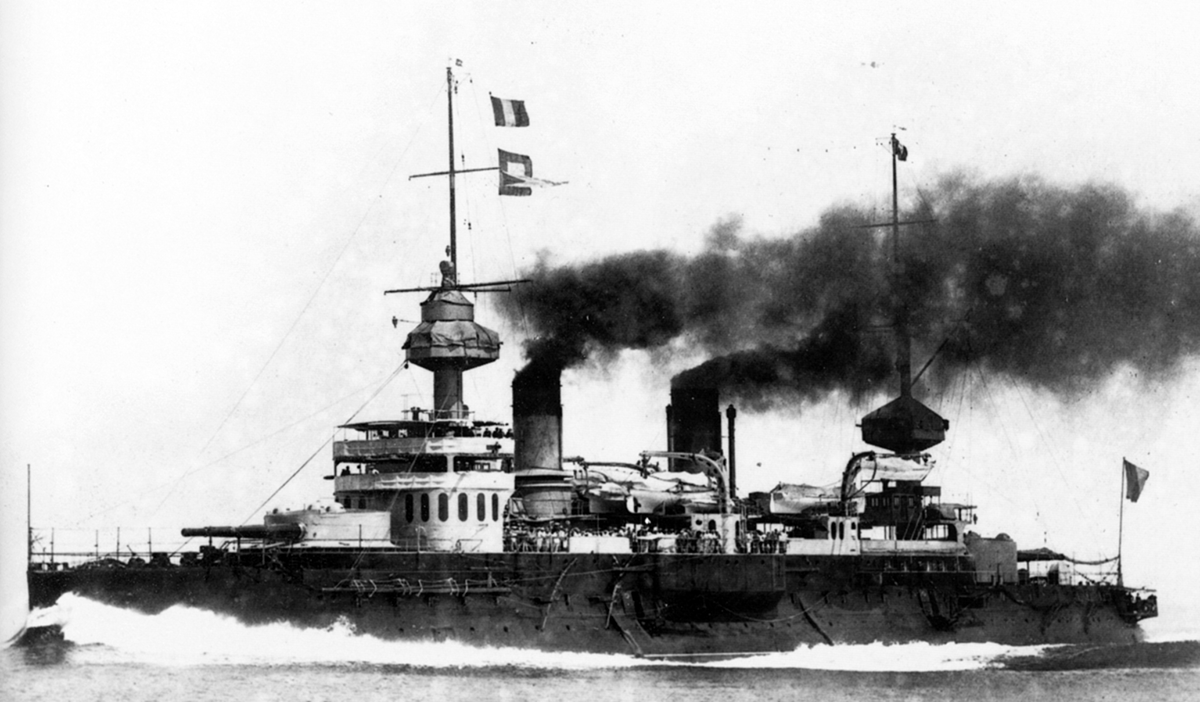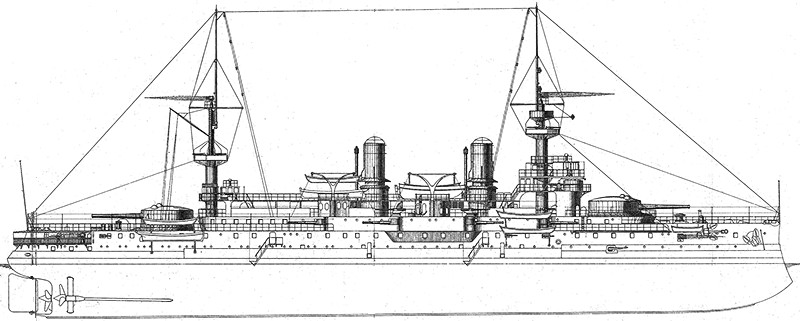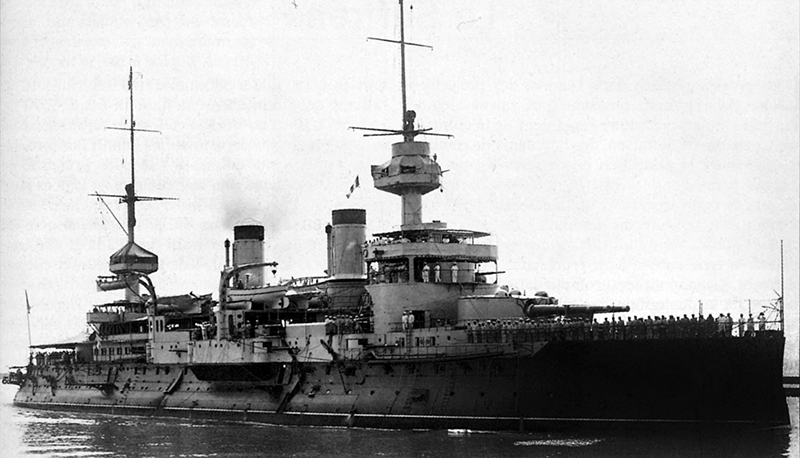
NAVYPEDIA
 Support the project with paypal
Support the project with paypal
Photo

Iéna
Ships
| Name | No | Yard No | Builder | Laid down | Launched | Comp | Fate |
|---|---|---|---|---|---|---|---|
| Iéna | Arsenal de Brest | 15.1.1898 | 1.9.1898 | 14.4.1902 | explosion 12.3.1907 |
Technical data
| Displacement normal, t | 11860 |
|---|---|
| Displacement full, t | 12105 |
| Length, m | 122.2 wl 122.4 oa |
| Breadth, m | 20.8 |
| Draught, m | 8.38 max |
| No of shafts | 3 |
| Machinery | 3 VTE, 20 Belleville boilers |
| Power, h. p. | 16500 |
| Max speed, kts | 18 |
| Fuel, t | coal 1080 |
| Endurance, nm(kts) | 4500(10) |
| Armour, mm | Harvey Nickel steel; belt: 330 - 120, upper belt: 120 - 80, main turrets: 290, turret bases: 200, secondary guns: 200 - 80, CT: 300, deck: 65 |
| Armament | 2 x 2 - 305/40 M1893-96, 8 x 1 - 165/45 M1893-96, 8 x 1 - 100/45 M1893, 20 x 1 - 47/40 M1885, 4 x 1 - 37/20 M1885, 4 - 450 TT (beam, 2 aw, 2 sub) |
| Complement | 682 |
Standard scale images

Iéna 1902 drawing from www.shipbucket.com
Graphics
Project history
In general design Iéna was an enlarged Charlemagne. The 305mm guns were arranged as in Charlemagne with the 165mm in casemates on the main deck, the four amidships weapons being sponsoned out over the tumblehome. The 3.9in guns were on the forecastle deck and superstructure. Though fitted with large bilge keels Iéna was reported to roll considerably and to pitch heavily.
Ship protection
The belt was complete and extended from 0.9m above water to 1.5m below. For 83.9m amidships it was 330mm and was gradually reduced to 230mm at the ends, the lower edge being a uniform 120mm. The upper belt was in two strakes, the lower 120mm and the upper 80mm, with a combined width of 2m increased at the bows and reduced at the stern. There was the usual cellular layer with the armour deck at the main belt upper edge 65mm max hardened steel on 18mm plating and the deck at the belt lower edge 33mm max. The casemates had 90mm armour with 200mm on the ammunition tubes.
Modernizations
early 1900s: - 2 - 450 TT (aw).
Naval service
She blew up in dry dock at Toulon 12.3.1907, the whole after section and much of the midships part being wrecked, though she was afterwards patched up as a target. The explosion was due to spontaneous ignition of decomposing nitrocellulose propellant in an after 100mm magazine, and the after 305mm magazines and shell rooms were later involved. It may be noted that most of the 100mm ammunition contained propellant that was known to be dangerous, and that the magazine cooling gear had been removed when the ship was in dock.
Iéna
 HOME
HOME FIGHTING SHIPS OF THE WORLD
FIGHTING SHIPS OF THE WORLD FRANCE
FRANCE IÉNA battleship (1902)
IÉNA battleship (1902)


